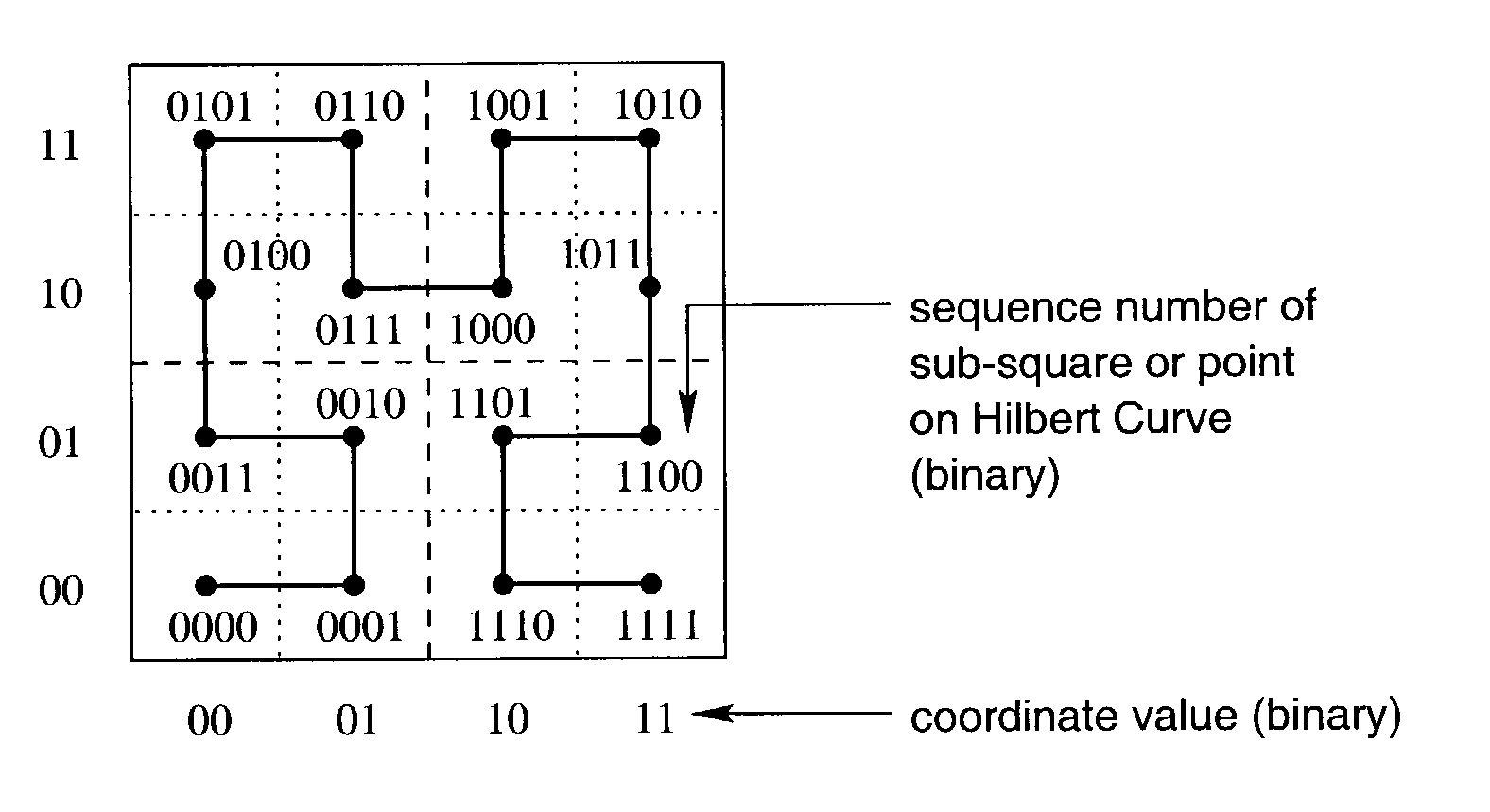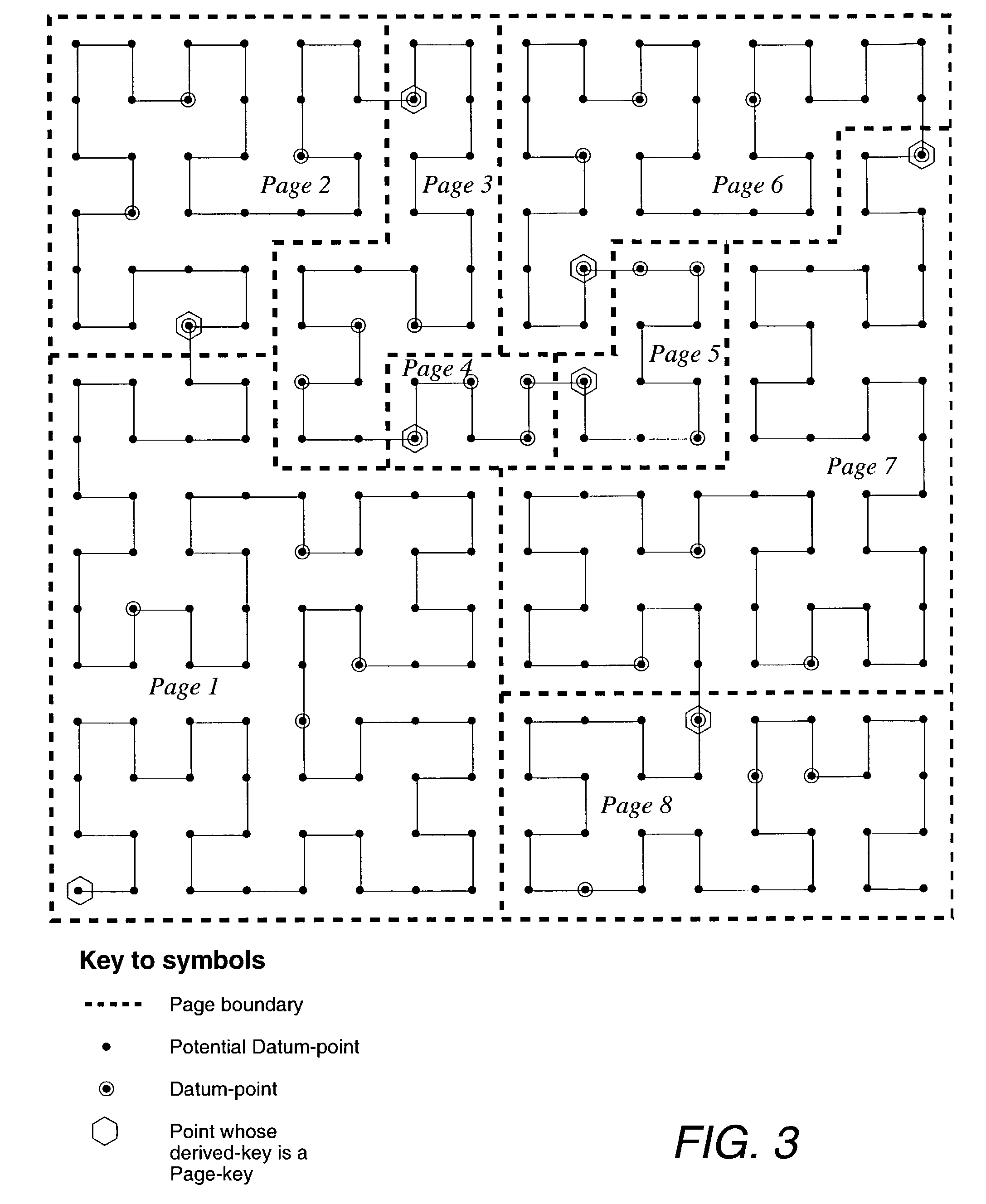Method of storing and retrieving multi-dimensional data using the hilbert curve
a multi-dimensional data and hilbert curve technology, applied in the field of efficient methods of partitioning and indexing multi-dimensional data, can solve the problems of excessive storage capacity, excessive maintenance overhead, and practicable limit to the number of secondary indexes that can be supported, and achieve the effect of reducing the number of pages of data
- Summary
- Abstract
- Description
- Claims
- Application Information
AI Technical Summary
Benefits of technology
Problems solved by technology
Method used
Image
Examples
Embodiment Construction
1 Data Organization and Indexing
[0075]The present invention relates to data spaces, or database domains, containing finite numbers of points, or finite numbers of possible actual data values, in which the Hilbert Curve, which is an ‘approximation’ of the Hilbert Space-filling Curve, passes through all points once and once only. The present invention approaches the organization of multi-dimensional data by regarding the data as points lying on the Hilbert Curve. The Hilbert Curve is described in Section 2 of this description of the present invention and methods of calculating mappings are described in Section 3.
[0076]The Hilbert Curve is named after the German mathematician David Hilbert. Hilbert represented the coordinates of points in space with a binary radix and this method is also used in the description of the present invention.
[0077]Each point in any space of finite granularity of points lies a unique distance along the curve from its beginning and thus is placed in order alon...
PUM
 Login to View More
Login to View More Abstract
Description
Claims
Application Information
 Login to View More
Login to View More - R&D
- Intellectual Property
- Life Sciences
- Materials
- Tech Scout
- Unparalleled Data Quality
- Higher Quality Content
- 60% Fewer Hallucinations
Browse by: Latest US Patents, China's latest patents, Technical Efficacy Thesaurus, Application Domain, Technology Topic, Popular Technical Reports.
© 2025 PatSnap. All rights reserved.Legal|Privacy policy|Modern Slavery Act Transparency Statement|Sitemap|About US| Contact US: help@patsnap.com



